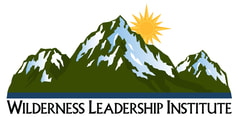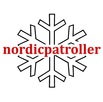Snowpack Summary January 13, 2023
Posted by Allen Giernet @ 7:50 am (this summary expires in 24 hours)
This summary applies to backcountry areas only.
The Bottom Line –
Following our last storm we have had warm days and cold nights leading to our most common problem in our local mountains – Fast Firm conditions with slide for life scenarios. Through the holiday season and into the new year there has been virtually a rescue called in everyday and some resulting in fatalities. Be mindful of knowing where you are, having the proper equipment with the knowledge and skill to use it and observing changing conditions as you travel. Be aware of getting into a bad situation before you can not get out of it.
The forecast storm is looking more favorable for this holiday weekend with colder temps and lower snowlines. If the forecast holds true we could see from 12” to over 2’ of snow with snow lines fluctuating between 6,500’ to 7,000’ beginning Saturday through MLK. Our problems will develop and increase through the storm
#1 problem will be Wind Slab avalanches on Northeast to northerly aspects due to the moderate to strong Southwest to South winds. Wind slabs can be possible on any aspect due to topographical influences look for the signs of drifting and blowing snow, wind textured surfaces and pillowed snow below ridges and on sides of gullies. If these signs are present avoid those slopes and stick to lower angle terrain <30°.
#2 problem will be Storm slabs due quickly accumulating snow. This will be possible on all aspects and generally above 7,000’. As snow accumulates so will the problem avoid slopes over 30° if you see signs of significant accumulation or sluffing snow. This type of problem may knock you off your feet and take you into nasty terrain.
There will be a mix of conditions and using your own judgement and observations will be key. Adding to the problems is that it will still be early season conditions at the lower elevations with exposed obstacles so a slip and fall can bring hazardous consequences. Exercise caution if venturing out into the mountains and use avalanche protocols, travel with a partner and bring your beacon, shovel and probe.
Please share any information when you are out in the mountains. Even a photo is helpful.
Please share your observations with us at the avalanche center Submit Reports page.
Posted by Allen Giernet @ 7:50 am (this summary expires in 24 hours)
This summary applies to backcountry areas only.
The Bottom Line –
Following our last storm we have had warm days and cold nights leading to our most common problem in our local mountains – Fast Firm conditions with slide for life scenarios. Through the holiday season and into the new year there has been virtually a rescue called in everyday and some resulting in fatalities. Be mindful of knowing where you are, having the proper equipment with the knowledge and skill to use it and observing changing conditions as you travel. Be aware of getting into a bad situation before you can not get out of it.
The forecast storm is looking more favorable for this holiday weekend with colder temps and lower snowlines. If the forecast holds true we could see from 12” to over 2’ of snow with snow lines fluctuating between 6,500’ to 7,000’ beginning Saturday through MLK. Our problems will develop and increase through the storm
#1 problem will be Wind Slab avalanches on Northeast to northerly aspects due to the moderate to strong Southwest to South winds. Wind slabs can be possible on any aspect due to topographical influences look for the signs of drifting and blowing snow, wind textured surfaces and pillowed snow below ridges and on sides of gullies. If these signs are present avoid those slopes and stick to lower angle terrain <30°.
#2 problem will be Storm slabs due quickly accumulating snow. This will be possible on all aspects and generally above 7,000’. As snow accumulates so will the problem avoid slopes over 30° if you see signs of significant accumulation or sluffing snow. This type of problem may knock you off your feet and take you into nasty terrain.
There will be a mix of conditions and using your own judgement and observations will be key. Adding to the problems is that it will still be early season conditions at the lower elevations with exposed obstacles so a slip and fall can bring hazardous consequences. Exercise caution if venturing out into the mountains and use avalanche protocols, travel with a partner and bring your beacon, shovel and probe.
Please share any information when you are out in the mountains. Even a photo is helpful.
Please share your observations with us at the avalanche center Submit Reports page.

Wind Slab avalanches are the release of a cohesive layer of snow (a slab) formed by the wind. Wind typically transports snow from the upwind sides of terrain features and deposits snow on the downwind side. Wind slabs are often smooth and rounded and sometimes sound hollow, and can range from soft to hard. Wind slabs that form over a persistent weak layer (surface hoar, depth hoar, or near-surface facets) may be termed Persistent Slabs or may develop into Persistent Slabs.

Storm Slab avalanches are the release of a cohesive layer (a slab) of new snow that breaks within new snow or on the old snow surface. Storm-slabs typically last between a few hours and few days (following snowfall). Storm-slabs that form over a persistent weak layer (surface hoar, depth hoar, or near-surface facets) may be termed Persistent Slabs or may develop into Persistent Slabs.
General Summary
Exercise caution on slopes over 30° as these conditions will exist throughout all mountain ranges. Always exercise caution when entering into winter mountain areas. Bring a Beacon Shovel and Probe and know how to use them. Travel with a partner and make conservative decisions.
Exercise caution on slopes over 30° as these conditions will exist throughout all mountain ranges. Always exercise caution when entering into winter mountain areas. Bring a Beacon Shovel and Probe and know how to use them. Travel with a partner and make conservative decisions.
General Mountain Weather Forecast |
Weather Page Link
Click on the links below for the latest information
Click here for this Season's Snow Pack Summaries
To better understand the challenges and potential variability over the large area we are producing information for please read our Snowpack Summary - Format and Limitations
Disclaimer:
This Bulletin is designed to generally describe conditions where local variations always occur. Travelers are advised to exercise caution and make slope specific evaluations. As always, please treat this bulletin with appropriately guarded skepticism and make your own assessments. Help to provide more information to the community by reporting your observations
This Bulletin is designed to generally describe conditions where local variations always occur. Travelers are advised to exercise caution and make slope specific evaluations. As always, please treat this bulletin with appropriately guarded skepticism and make your own assessments. Help to provide more information to the community by reporting your observations
Latest Observtions
Click on the observation to go to the full report
|
Observation type
Snowpack Location - Mt. Islip Date (yyyymmdd) -20230102 Comment North slopes in the area were barely covered enough to skin and ride. Rideable surfaces were limited to designated trails and fire roads where rocks, trees, and shrubs are cleared at the base. South facing slopes were almost completely bare in the area. My rough snow pit observation showed three general layers spanning the 21 cm depth. 0-14 cm was pencil hard (early season melt-freeze layer), 14-17 cm was one finger hard, 17-21 cm was 4 finger hard (new dusting likely from New Years Eve). |
Observation type
Snowpack Location - Mt. Pinos Summit Date (yyyymmdd) - 20221111 Comment - Comment Powder lingering well from the storm earlier in the week, coverage in summit area quite skiable. |
Observation type
Snowpack Location - Wrightwood Date (yyyymmdd) - 20221109 Comment - First snowstorm of the season rolled through the Eastern San Gabriel mountains late Tuesday 11/8 after a day of torrential rain and wind (~4in liquid per my station, 60mph gusts) that came in warmer than originally forecast. Storm switched over to snow at roughly 7pm on Tuesday evening and cleared out before sunrise Wednesday. Snow totals at 2000m were 6cm of dense, high-moisture white stuff. Reports of 12cm from 2400m on the ridge above. Not bad, considering it's still early November, but a shame the storm didn't come in a few degrees cooler and with more snow. I'll get out this weekend for some exploration on the ridgelines to see how much loaded up on the Northern leeward slopes. |
General Caution
You should always use safe terrain management and carry avalanche rescue equipment in the backcountry. Most avalanches are triggered by someone in the party or the victim. Practice with your rescue gear often and be prepared should the worst happen. Though we do not have an avalanche forecast center in this area as of yet, the information posted and shared here as well as the resources available on this site will help to make informed decisions for your backcountry travels. Use avalanche forecasts in your travels wherever available and be aware that avalanche ratings are general information. Elevation, location, geographic variability’s, slope aspect and angle all have effects on the particular area you travel in. This is only one piece of the information you should use in your decision making process. There is no substitute for avalanche education, for more resources and information as well as education please refer to our resources page.
You should always use safe terrain management and carry avalanche rescue equipment in the backcountry. Most avalanches are triggered by someone in the party or the victim. Practice with your rescue gear often and be prepared should the worst happen. Though we do not have an avalanche forecast center in this area as of yet, the information posted and shared here as well as the resources available on this site will help to make informed decisions for your backcountry travels. Use avalanche forecasts in your travels wherever available and be aware that avalanche ratings are general information. Elevation, location, geographic variability’s, slope aspect and angle all have effects on the particular area you travel in. This is only one piece of the information you should use in your decision making process. There is no substitute for avalanche education, for more resources and information as well as education please refer to our resources page.






















